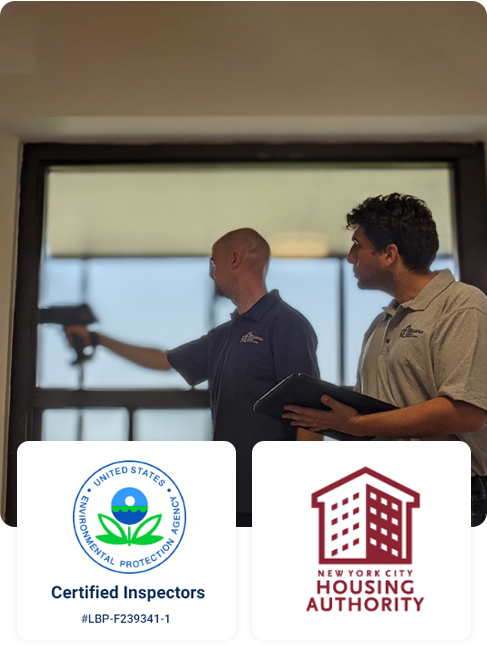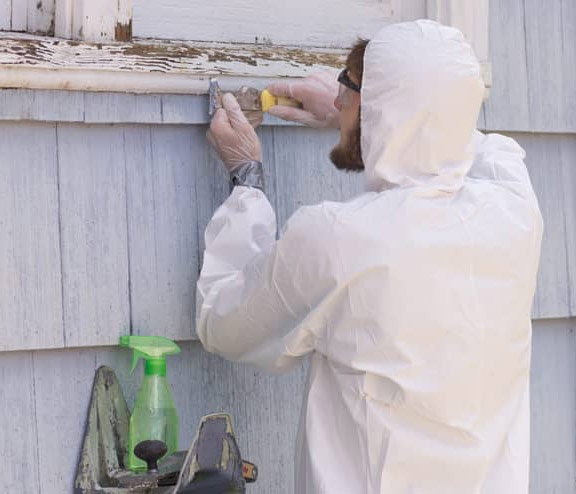Necessary Tools and Techniques for Reliable Lead Infraction Cleaning
Addressing lead offenses properly requires an extensive approach that blends the right devices with strategic methods. Concurrently, the usage of specialized clean-up devices, such as HEPA vacuum cleaners and lead-specific cleansing representatives, is imperative for extensive pollutant removal. Efficient containment techniques, including plastic sheet and unfavorable air stress systems, are necessary to prevent the spread of dangerous products.
Individual Protective Equipment
Individual protective equipment (PPE) is a crucial part in the effective administration of lead contamination cleanup. PPE works as an essential barrier, safeguarding employees from the unsafe effects of lead direct exposure, which can cause severe wellness repercussions. The crucial PPE for lead clean-up consists of respirators, protective clothes, gloves, and eye security. Each kind of devices is specifically developed to minimize various risks linked with lead particles and dust.
Respirators, particularly those equipped with HEPA filters, are crucial for filtering system airborne lead fragments, stopping inhalation. Correct fit and seal checks are important to ensure their effectiveness. Safety apparel, including coveralls and disposable suits, prevents lead dirt from sticking to workers' garments, reducing the threat of additional contamination. Handwear covers, usually made of nitrile or latex, protect the skin from straight contact with lead, while security goggles or full-face shields secure the eyes from dirt and debris.
Furthermore, rigorous training on the appropriate usage and upkeep of PPE is important. Employees should be educated on wearing and doffing treatments to stay clear of contamination. Regular assessments and substitutes of PPE parts are necessary to keep their protective capacities, guaranteeing a secure and compliant clean-up procedure.
Specialized Cleanup Equipment

One more crucial tool is the wet/dry vacuum cleaner, which can properly tidy up both dirt and fluid contaminants. These vacuums commonly come with HEPA filters to supply an added layer of safety. Damp cleans or tack towels are also important for surface area cleaning; they are specifically created to record and hold lead fragments, decreasing the danger of spreading out contamination.
For even more persistent down payments, specialized lead-removal cleaning agents are required. These agents are developed to break down lead bits, making them less complicated to remove. Scrub brushes with sturdy bristles can aid in this process, particularly on rough surfaces where lead dust tends to adhere extra highly.
In addition, encapsulants are used to secure lead-contaminated surface areas, stopping the launch of lead dirt. These specialized paints and layers are designed to abide by numerous substratums, giving a lasting service for lead containment.
Effective Control Approaches
Efficient containment approaches are important in reducing the spread of lead contamination throughout clean-up activities. Applying durable containment methods guarantees that lead particles do not move to unaffected locations, consequently safeguarding both workers and the setting (DOH & HPD Lead Violation Removal NYC).

To boost containment, encapsulants can be put on surfaces that are not being gotten rid of or interrupted. These specialized finishings bind lead dust, minimizing its availability for resuspension. In addition, all personnel have to use suitable Individual Safety Equipment (PPE), consisting of respirators and disposable fits, to stop contamination spread.
Safe Disposal Practices
Making certain safe disposal practices is an essential element in the monitoring of lead contamination cleanup. Appropriate disposal mitigates the danger of lead re-entering the setting and endangering public health and wellness. The initial step is to determine and set apart lead-contaminated waste from other materials. Protected control using durable, watertight containers is important to stop splilling throughout transportation.
Carrying lead waste needs adherence to stringent standards. Making use of licensed contaminated materials providers makes sure that the materials are dealt with properly. Paperwork, including materializes detailing the type and quantity of waste, should accompany shipments to track the waste from the site of origin browse this site to its last disposal location.
Designated unsafe waste disposal centers are outfitted to take care of lead-contaminated products securely. These facilities commonly use innovative approaches such as stablizing, solidification, or chemical treatment to neutralize the lead before disposal. Landfilling in specialized, lined locations that protect against leachate from polluting groundwater is an usual technique for last disposal.
Routine training for personnel involved in lead garbage disposal is critical to keep safety criteria and stop unexpected exposure. By sticking to these methods, organizations advice can significantly reduce the ecological and health and wellness impacts connected with lead contamination.
Regulatory Conformity Tips

Abiding by regulatory conformity is extremely important in the effective execution of lead contamination cleaning. Understanding and adhering to federal, state, and neighborhood guidelines ensures not only the safety and security and health of people but additionally the legal and economic well-being of the clean-up organization. The Epa (EPA) establishes stringent requirements, such as the Lead Renovation, Repair Service, and Painting (RRP) Guideline, which mandates correct accreditation and training for contractors managing lead-based tasks.
Compliance begins with a complete assessment of appropriate regulations and laws. Organizations must stay updated on any type of find more info legal changes, which can be facilitated via routine training sessions and subscribing to industry updates. Paperwork is one more critical compliance element; preserving in-depth documents of all tasks, consisting of examination records, staff member training logs, and disposal manifests, is necessary.
In addition, involving with licensed lead assessors or take the chance of assessors makes certain that lead threats are properly determined and reduced. Employers should impose making use of Personal Safety Tools (PPE) and guarantee that safety protocols are purely adhered to. Last but not least, clear communication with stakeholders, including employees, clients, and governing bodies, will certainly promote a culture of conformity and liability, eventually adding to a safer and extra effective lead clean-up process.
Verdict
Reliable lead violation cleaning requires the combination of specialized tools and critical methods to ensure safety and security and effectiveness. Making use of HEPA vacuums, specialized cleansing agents, and effective control methods such as plastic sheet and negative atmospheric pressure systems is important. Individual protective devices (PPE) safeguards workers from direct exposure, while secure disposal methods and rigorous adherence to regulatory conformity are important for sensibly managing contaminated materials. Collectively, these steps dramatically reduce wellness risks and add to a cleaner setting.